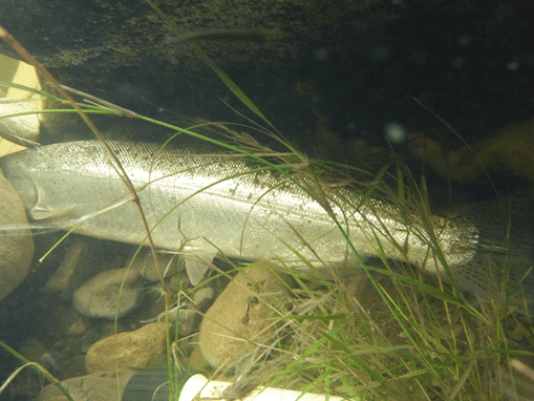The future of Southern California steelhead
Southern California steelhead are survivors. Unlike their Northern California cousins, they have adapted to seasonally dry streams in the arid climate at the extreme southern end of the steelhead range. Tens of thousands of these prized sport fish used to return to Southern California streams every year, but now they’re stopped by dams and water diversions, urban development, and livestock grazing. These impacts have decimated southern steelhead runs, and today, only a few hundred of the iridescent fish make their yearly spawning pilgrimage.
The recovery of these endangered fish is the focus of many of our projects operated out of California Trout’s Southern California offices. We are leading collaborations of non-profit organizations, government resource agencies, and interested stakeholders through our Santa Clara River Steelhead Coalition and the South Coast Steelhead Coalition which covers Orange and San Diego counties. These coalitions execute a multitude of projects dedicated to Southern California steelhead recovery, such as drafting recovery plans, watershed restoration, infrastructure improvement projects to remove barriers hindering fish passage, water quality testing, and public education and engagement.
Balancing the needs of fish and people in California is a challenge. It is imperative that we “figure out how to support essential human activity while also protecting critical water flows and providing fish passage. Today, nowhere is this tension more acute than along our South Coast”, as stated by our Southern California Conservation Programs Manager, Candice Meneghin, in an article to the Ventura County Star.
We highly encourage you to read Candice’s article where she discusses more about the plight of the southern steelhead and what CalTrout and other partners are doing about it.
⇒ Forging the Future of Steelhead, Ventura County Star

Photo courtesy of the Santa Monica Mountains’ Stream Team






1 Comment
I have developed a method to capture and store peak stream water flows on local stream and creeks in Santa Barbara county, to utilize this water for fish habitat rehabilitation. Am available for slide and video show/presentations and Q&A ..